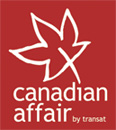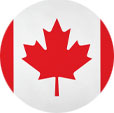What if Halloween wasn’t just for kids? What if there was a way for adults to enjoy an annual festival of fancy dress, treats and dancing as well?
Well, in a remote northern Canadian town, there is just that kind of party.
Natashquan, located on Quebec’s northern shore, is one of the last remaining spots in North America where the holiday of Mi-Carême is celebrated. Every year members of this community of 250 people disguise themselves in elaborate costumes. And for almost an entire week, which is roughly midway between Pancake Day and Easter, neighbours enjoy each other’s company in head-to-toe fancy dress.
According to tradition, it’s customary for hosts to guess the identity of their visitors before sharing a drink or a sweet together. In order to signal that their homes are open to “les Mi-Carêmes”, residents of Natashquan place a scarecrow outside their homes or decorate them with red lights.
“It’s like 100 times better than Halloween,” said event reveller Vincent Lemelin in an interview with local media following this year’s Mi-Carême celebrations. “Halloween is for children. Mi-Carême is for grown-ups.
“It’s more community-based. It’s more about meeting people.” Lemelin said.
The event ends with a community-wide dance and musical celebration.
The origin of Mi-Carême
Even for those who celebrate the festival today, the origin of Mi-Carême is mostly lost on people nowadays. The tradition goes back centuries and has been celebrated in many European communities since medieval times.
Traditionally, the carnival-like Mi-Carême is considered to embody the “spirit of joy, laughter and mockery.” It was held as an expression of freedom from the religious restrictions placed on people by the Church during Lent. According to Le Centre de la Mi-Carême, it is an event that counter balances the Lenten period of sacrifice, austerity, severity and penance leading up to Easter. Translated from French, “Mi-Carême” literally means the middle of Lent.
Mi-Carême crossed the Atlantic Ocean with the first French-speaking settlers now carrying on the tradition in Quebec. In Quebec, including in its largest city, Montreal, French is the preferred language. Although most people are bilingual, the region definitely identifies with its French historical roots.
Much like its southerly neighbour, America, Canada incorporates a number of European and Asian cultures into its country. With ties to France, Britain and a strong connection to Japan in places like Vancouver, there are plenty of culturally diverse experiences to enjoy whilst on holiday in Canada.

On the coast of the Gulf of St. Lawrence, the town of Nastashquan captures much of Canada’s diverse past. To this day, the small Quebec community reflects the coming together of French settlers and the indigenous peoples of North America. The small fishing town of less than 300 boasts a number of historic homes and buildings, as well as a seaside boardwalk. It was named by the Innu people who made the coast their home prior to the arrival of the French.
Image credit: Guillaume Cattiaux







